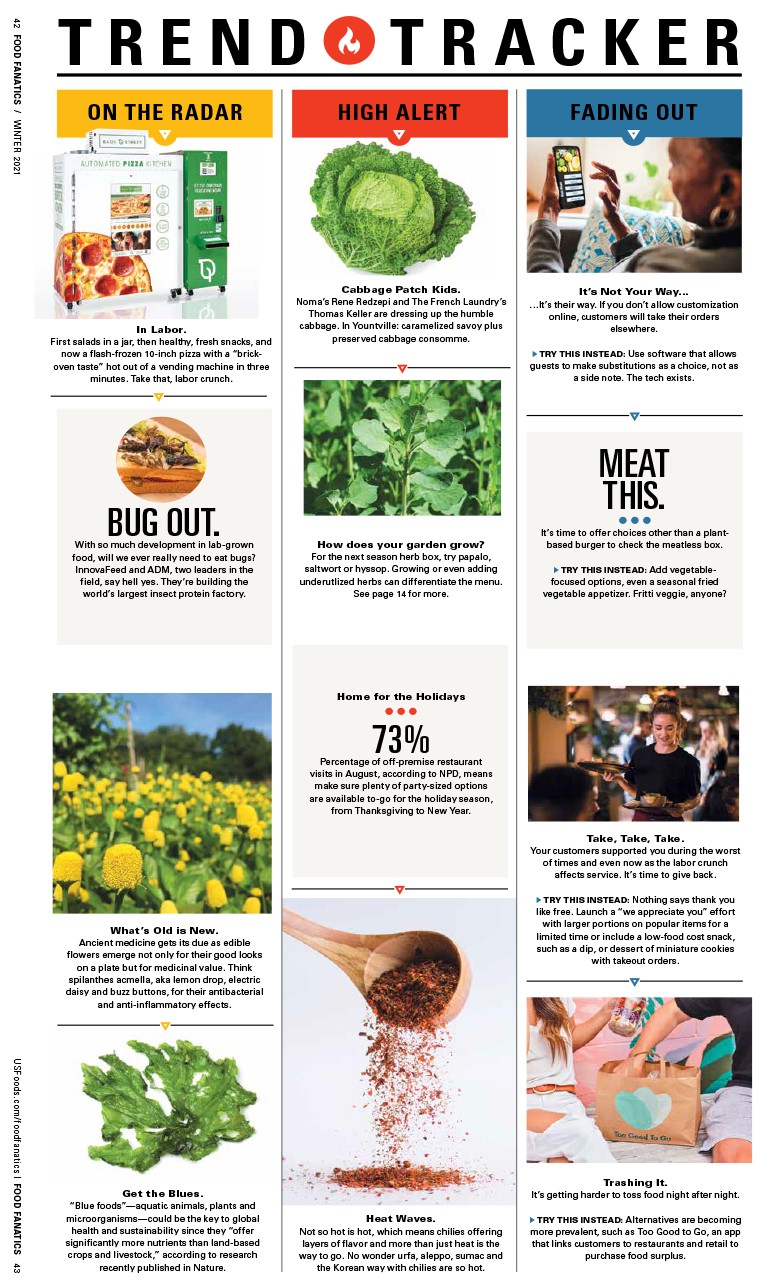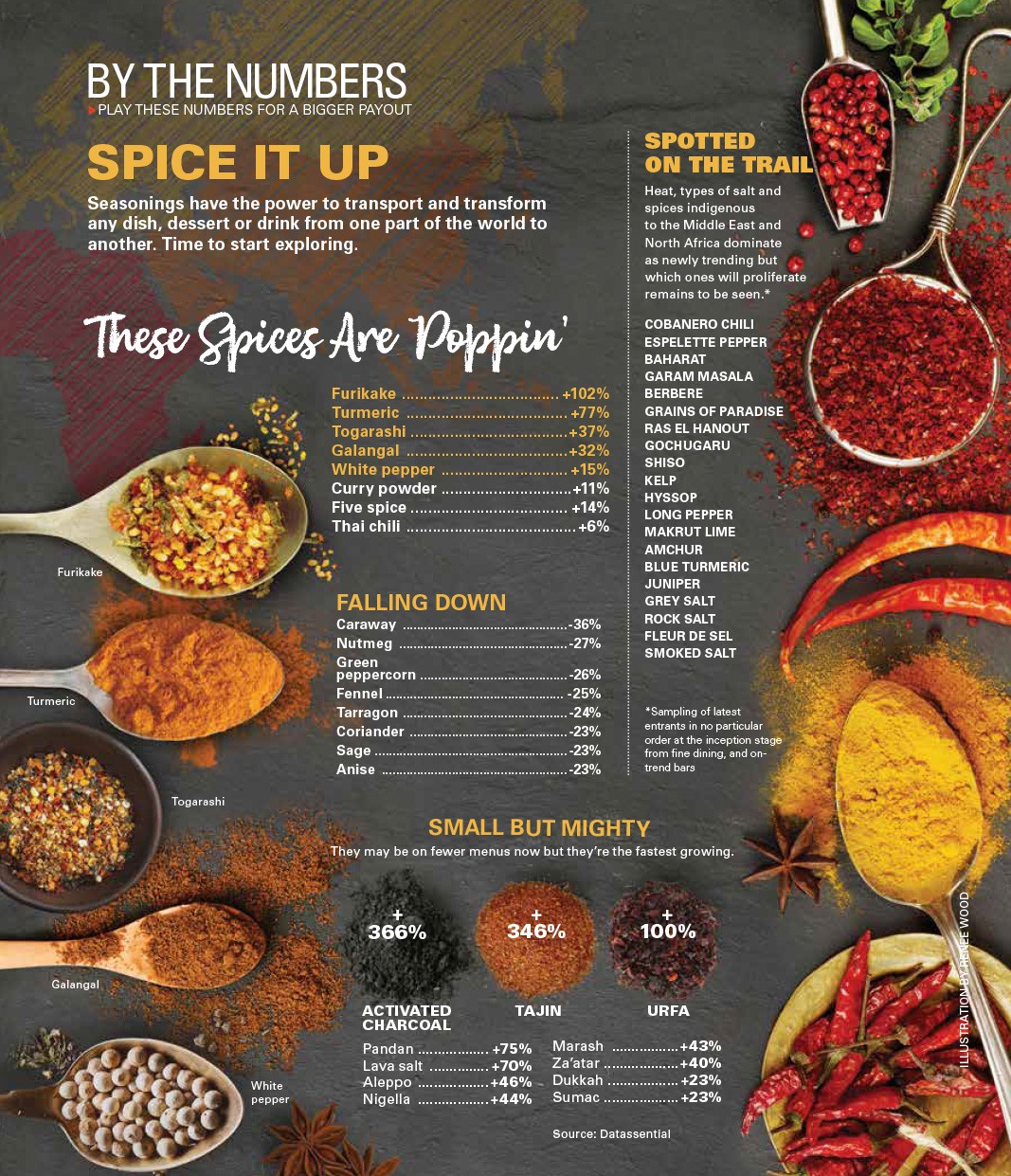Not Your Grandma's Meatballs
At one time, meatballs were to spaghetti as peanut butter to jelly: a perfect pair. These days, meatballs are going solo, grabbing attention as a classic Italian-American staple alongside other global power balls made with goat, chicken and lamb. In fact, meatballs have become popular enough to carry a menu section and even an entire concept. A bonus: If you play your cards right, they can be a low-cost winner and a signature item that will draw customers. Here are some attention-worthy finds to inspire your meatball dish or menu:
The Jet-setting Meatball
Nearly every culture has its own take on the meatball, providing endless opportunities to introduce it as a classic or re-imagine it through a chef lens.
Greek: Meatballs allow Chef Michael Psilakis to balance the cuisine of his heritage with consumer-friendly dishes at Kefi in New York. “I couldn’t call the dish the traditional name tsoutsoukakia on the menu, but customers immediately identify meatballs,” he says. “It demystifies the Greek-ness of it.” Kefi’s meze-size order of meatballs, served with a kalamata olive and tomato sauce ($6.95), has come close to a signature item.
"We treat them like Mexican restaurants treat guacamole—it’s the first dish people order to share, and they eat them while perusing the menu."
––Bryan Moscatello of Storefront Company
Asian: Malaysian flavors inspired Chef Gregory Gourdet to create wagyu meatballs with garam masala and palm sugar soy ($12) at Departure Restaurant + Lounge in Portland, Ore.
Lebanese: The classic Lebanese preparation, kibbe, with lamb and bulgur wheat is served with hummus and cucumber salad ($14) at Figue Mediterranean in La Quinta, Calif.
Spanish: Meatballs make for a perfect tapas-sized dish at Al Lado in Denver, where Chef de Cuisine Clint Wangsnes pairs bite-sized lamb meatballs with a tomato-based sauce, zucchini and goat cheese ($10).
Swedish: IKEA may have put this Swedish classic on the U.S. map, but New York’s Smorgas Chef makes a fancier version with local heritage pork and grass-fed beef served with chive mashed potatoes, pickled red cabbage, gradd (brown) sauce and lingonberries ($22).
Meat Your Match
Chefs aren’t just playing with spice and sauce flavors—they’re also using the trusty meatball to introduce hesitant customers to gamier proteins beyond the stalwart beef.
Goat: Goat meat is the primary protein in the meatball appetizer ($13) at Nick’s Cove in Marshall, Calif. Chef Austin Perkins grinds goat shoulder, mixing it with about 5 percent salt pork fat as a binding agent, along with eggs, oil, Parmesan, carrot, celery and coriander. “They sell much better than I thought they would—a lot of people are wary of goat,” Perkins says. “But this is an accessible way to try something different, and people order them again and again.”
Lamb: Nothing goes to waste at Chicago’s Storefront Company, where leftover lamb trimmings become Sicilian-inspired meatballs ($12) with currants, pine nuts and French sheep’s milk cheese (Ossau-Iraty) instead of the classic Parmesan. “We treat them like Mexican restaurants treat guacamole—it’s the first dish people order to share, and they eat them while perusing the menu,” Executive Chef Bryan Moscatello says.
Duck: The hot item at Japanese gastropub Miyabi 45th in Seattle is Chef Mutsuko Soma’s duck meatball appetizer ($12). Soma grinds duck breasts with the fat and skin, adding chicken breasts to boost the protein-to-fat ratio. Eggs, panko and cornstarch keep the meatballs moist, while a salt-water poach creates a light texture.
A MEATBALL MENU
Chicken meatball slider with Parmesan, thyme and sauce, $2.50
24th & Meatballs, Portland, Ore.
Eggplant meatballs with spicy marinara, $4.99
Brooklyn Meatball Company, Houston, Texas
Lamb köfte (Turkish meatballs) with onions, parsley and spices, $7.95
Cafe Divan, Washington, D.C.
Salmon meatballs with pasta in red pepper cream sauce with bacon, peppers and provolone, $7.05
Slotted Spoon Meatball Eatery, Denver
Meatballs and tomato with basil, Parmesan, ginger, soy sauce and gochujang (spicy Korean condiment), $10
Poppy Den, Las Vegas
Albóndigas (classic Mexican soup) with lamb and pork meatballs, tomato saffron broth, chickpeas and mint, $10
Mateo Tapas Bar, Durham, N.C.
The Classic Keeps On Rolling
Grandma’s classics are still kicking, proven by the wave of niche restaurants from New York (The Meatball Shop) to San Diego (Meatball Cucina) where meatballs are the stars. But “classic” doesn’t have to mean rote or traditional, as shown by the six varieties offered at Meatball Spot in Las Vegas. Still, the restaurant estimates that the $9.99 Italian classic (blend of beef, veal and pork) makes up 80 percent of the orders.
At Pizzeria Biga in Detroit, Chef Luciano Del Signore’s customers often go for a side of meatballs ($7.50) to accompany their slices. He braises the meatballs made with local grass-fed beef, fresh breadcrumbs, egg, parsley and cheese. “At my high-end restaurant, Bacco, we do duck meatballs, lamb meatballs, anything new,” he says. “But Pizzeria Biga is a casual neighborhood spot, and beef is exactly what people love.”
A Solid Cost Performer
There’s just as much variety in a meatball’s food cost as in its range of flavor possibilities. The “meat” in meatballs is stretched with ingredients such as eggs and bread, but without a high percentage of low-cost ingredients, the result could be a bump up in food costs.
Del Signore’s meatball food cost is more than he’d like at Pizzeria Biga (higher end of 30 percent), but it’s balanced by lower-cost menu items. At the value- and volume-driven Kefi, low price points are offset by a high number of covers, so Psilakis is comfortable with a 25 percent to 28 percent food cost.
Working with whole animals can offer more pricing flexibility. Moscatello says he can assign different meat costs to various dishes at Storefront Company so that pricier racks of meat and New York strips can sell for more, while the ground meat mixture in his meatballs carries a food cost of about 25 percent.
“At the end of the day, if I’m utilizing and selling all parts of the lamb, I’m doing well,” he says. “The meatballs help us do that so they’re a win.”
Rachel Mount Hofstetter is the author of “Cooking Up a Business” (December 2013, Penguin). Her work has appeared in O, the Oprah Magazine, Reader’s Digest, Fitness and others.
The Perfect Blend It’s Personal Michael Psilakis grinds Kefi’s 30 percent beef and 30 percent pork in-house and shapes it with an ice cream scoop. “You don’t want to mix it a lot or the fat becomes emulsified and changes the molecular structure,” he says. Carla Pellegrino, formerly of the Meatball Spot, mixes meat and textures: coarsely ground beef, medium grind veal and finely ground pork. “The fine grind of the pork means it can mix into the other two meats,” she says. At Storefront Company, Bryan Moscatello uses the classic 80 percent lean-20 percent fat ratio with a medium grind. “To achieve that with lamb, I take all of the trimmings from one lamb, plus one of the bellies, which are very fatty,” he says. |



